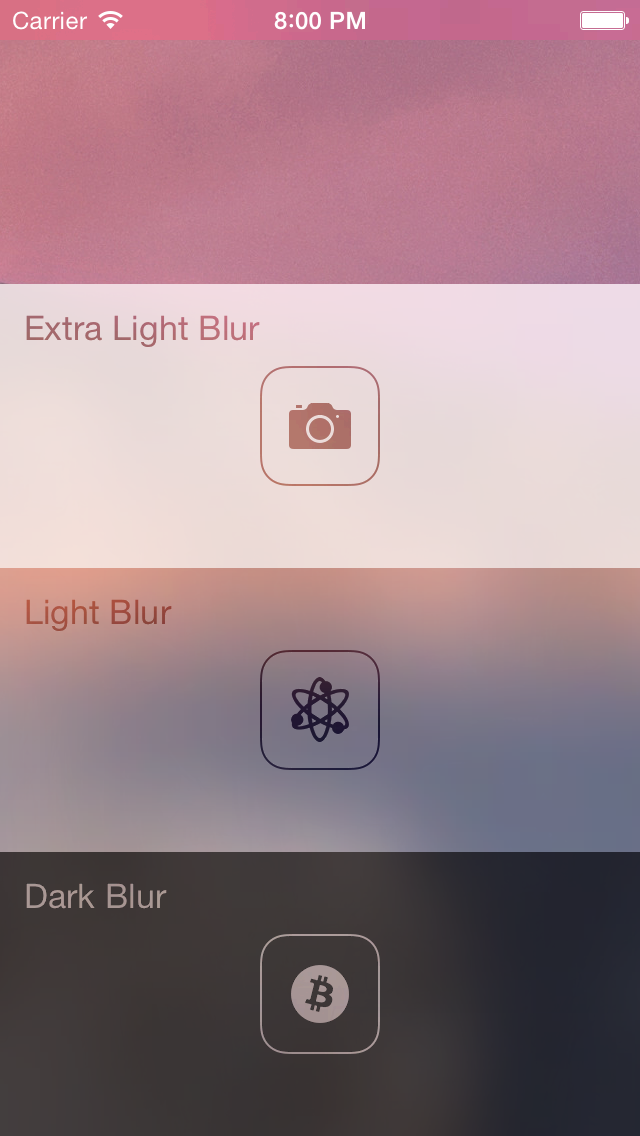Component to make easy use of iOS8
UIVisualEffectViewswithUIBlurEffectandUIVibrancyEffectin ReactNative.
npm install react-native-effects-view --save- In XCode right click on project's name and choose
Add Files to.. - Go to
node_modules/react-native-effects-viewand selectDVEffectsfolder - Now you're ready to
require('react-native-effects-view')inside your app!
blurStyle(String) - choose one of the following:"light"(default)"extraLight""dark"
vibrantContent(ReactElement) - render vibrant content inside blurred view.
All children of <EffectsView /> will be blurred, however you can use it without children and position element on top of background images and other views.
In order to see usage example check example/EffectsApp folder in XCode (don't forget to run npm install inside). It contains the app presented by screenshot.
var React = require('react-native');
var EffectsView = require('react-native-effects-view');
var { AppRegistry, StyleSheet, View } = React;
var App = React.createClass({
renderVibrant() {
return (
<View>
<Text style={styles.text}>Do you feel blurry??</Text>
</View>
);
},
render() {
return (
<EffectsView
style={styles.view}
blurStyle="dark"
vibrantContent={this.renderVibrant()}
>
<Image style={styles.bg} source={require('image!bg')} />
</EffectsView>
);
}
});
var styles = StyleSheet.create({
bg: {
flex: 1,
position: 'absolute',
bottom: 0,
left: 0,
right: 0,
top: 0,
justifyContent: 'center',
alignItems: 'center',
},
view: {
flex: 1
},
text: {
fontSize: 20,
color: 'white',
textAlign: 'center',
},
});
AppRegistry.registerComponent('App', () => App);Demo app is inspired by UIVisualEffects repo.
MIT Licensed
